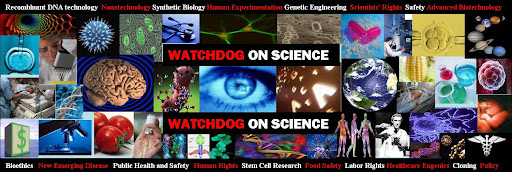
Those who care about public health and fear that our government isn’t paying enough attention to the potential hazards spawned by the massive explosion of nano technology have something to cheer. But also something that shows that a lot more research is needed into the new technology — and quickly.
The comfort should come from the knowledge that scientists at the National Institute for Occupational Safety and Health have completed the agency’s second study into the health effects of nanomaterial. The concern lies in the fact the research shows that the material moved easily from inside the lungs of test animals into the pleura, which is the tissue that surrounds the lungs.
The findings are the first to demonstrate that carbon nanotubes aspirated by laboratory mice can actually migrate from the tiny structures in the lung called alveoli, which are critical for gas exchange, through the lungs to the pleura.
“This is important because the pleura is the tissue that can develop a form of cancer, malignant mesothelioma, after asbestos exposure, and multi-walled carbon nanotubes are durable fiber-like particles that share many features with asbestos fibers,” Dr. Ann Hubbs, one of the four scientists on the project told me today.
Research into commercial applications of nanoparticles is being pushed at an intensity never seen with any other technology, but examination of the health and safety implications to workers and the public has lagged significantly, especially in the U.S.
What worries many who have studied the new technology is that because of their infinitesimal size, nanoparticles can and do pass through the body’s traditional barriers and defense mechanisms. They are easily transported through the bloodstream, respiratory and gastrointestinal pathways into all organs, the brain and even individual cells.
Add to this the fact that nanoparticles are often more toxic than traditional products of the same chemical composition that have been used for decades.
There are thousands of unique nanostructures being developed by industry today. The material that the NIOSH team investigated is called multi-walled carbon nanotubes, or MWCNTs. These structures, according to NIOSH, show promise for various applications ranging from creating stronger, more durable building materials to improving cancer therapies.
However, as with other types of engineered nanomaterials, the potential occupational health implications of MWNCTs are not well understood.
In the testing at NIOSH’s Morgantown, W.Va. Laboratory, mice inhaled a small drop of liquid containing the nanotubes in a manner that closely resembles inhalation of the same material suspended in the air, such as an exposure that a worker might encounter.
Other investigators, overseas, have reported inflammation and mesothelioma of the abdominal lining after nanomaterial was injected into the lining of the abdominal cavity.
All of these studies reinforce the need to adopt a rigorous approach to controlling occupational exposures among workers during the production and use of the nanomaterial, NIOSH says.
NIOSH’s pioneering research was presented before the Society of Toxicology this week because of the importance of its findings, but the authors’ stress that the preliminary scientific findings demand that more work be done.
As the only government agency tasked with research on workplace illness and injury, NIOSH is leading the way in health studies on nanotech material.
In addition to Hubbs, who is a veterinary pathologist, the research was conducted by Drs. Vincent Castranova, chief of the Pathology and Physiology Research Branch in the Health Effects Laboratory Division; Hubbs; Dale Porter, a pulmonary toxicologist; and Robert Mercer, a bio-engineer.
For more information, here is a link to a NIOSH document Approaches to Safe Nanotechnology.










